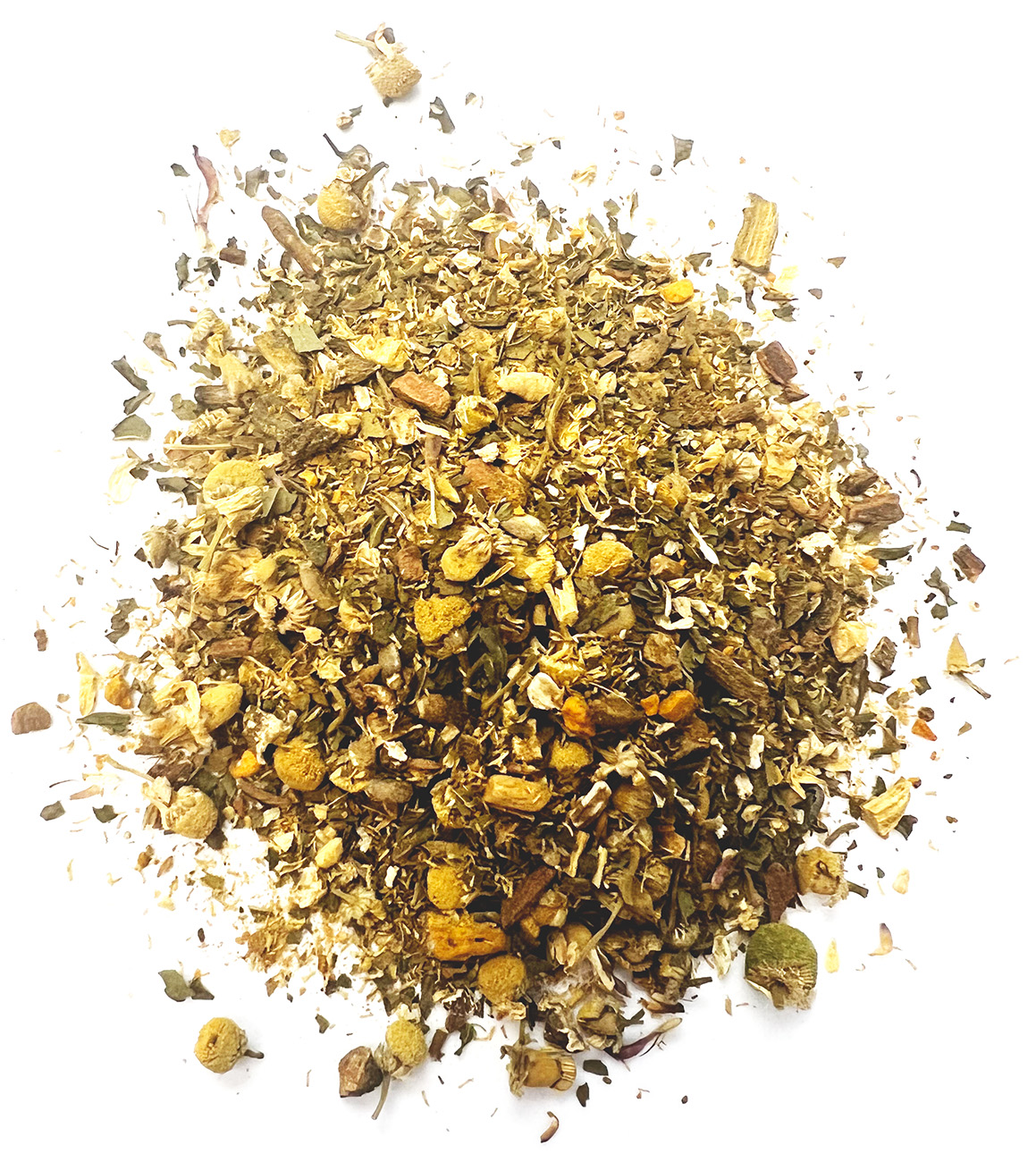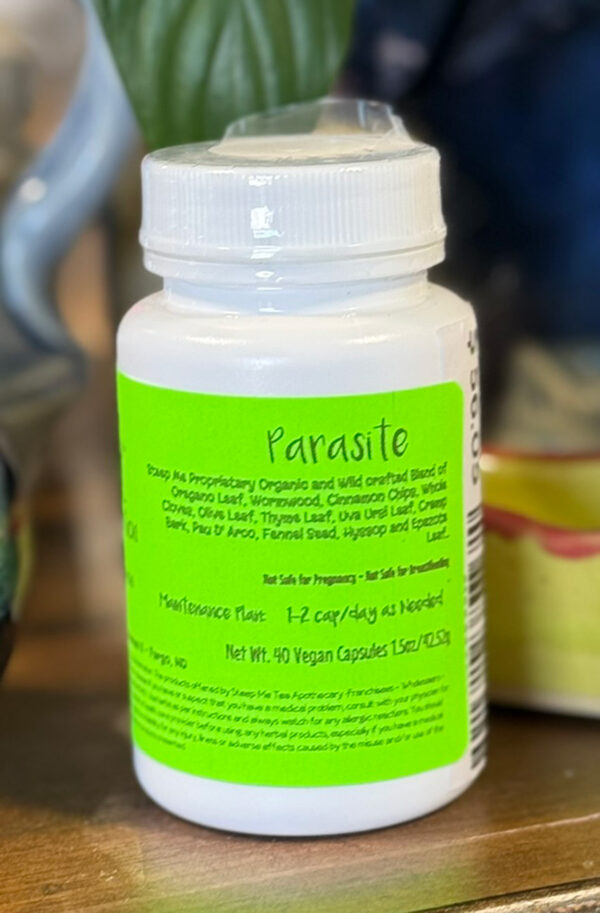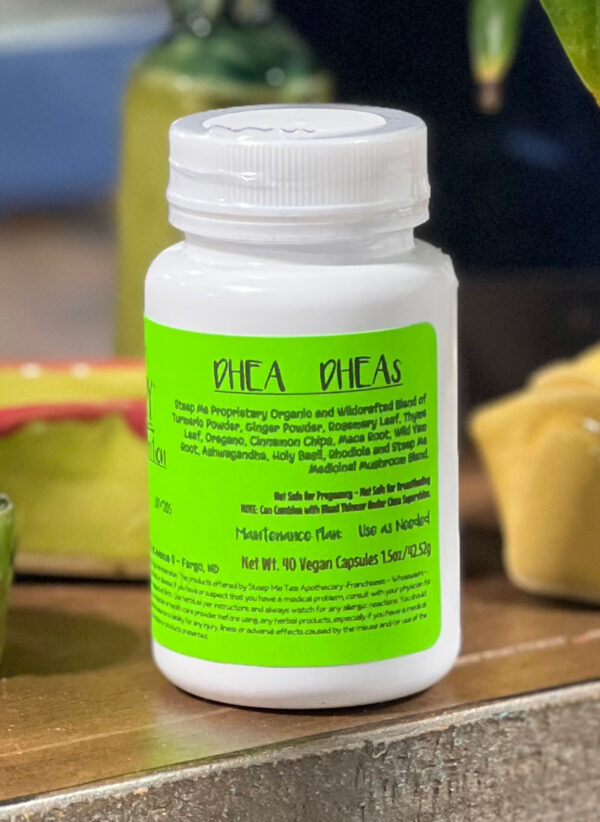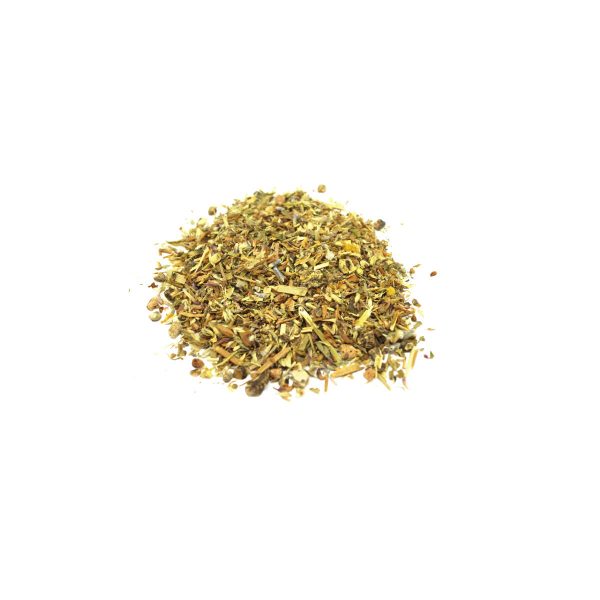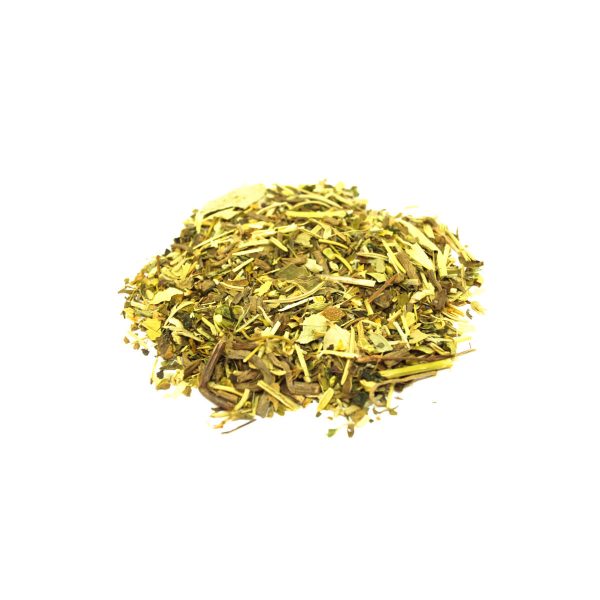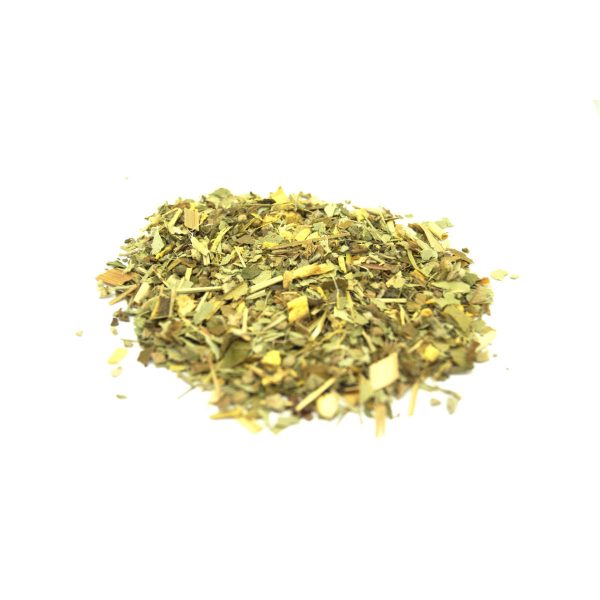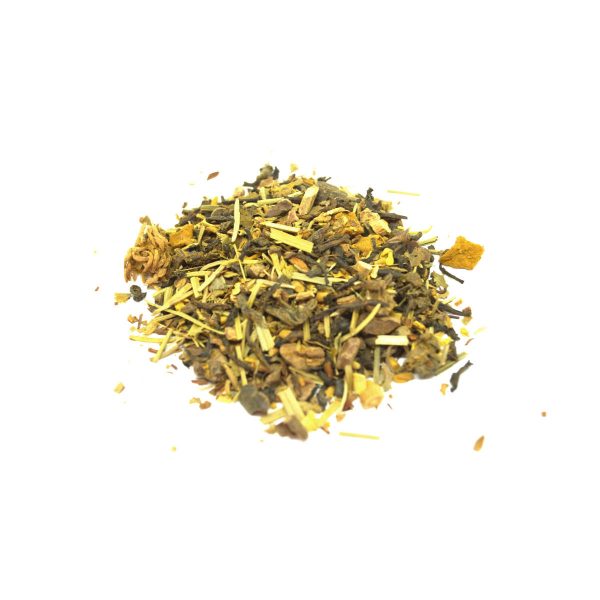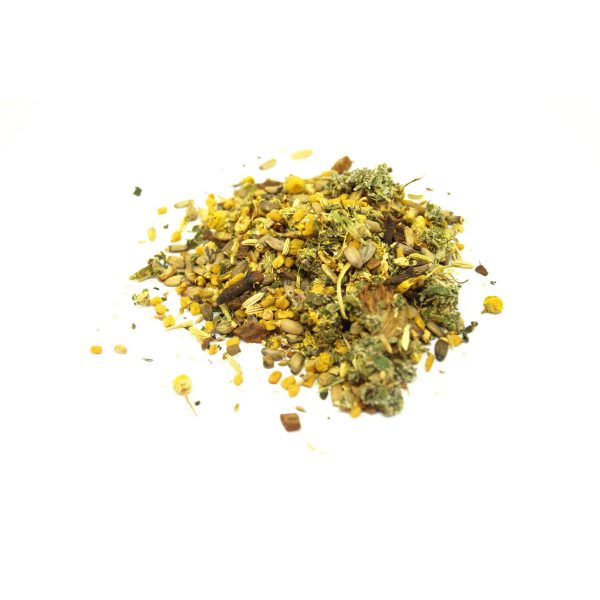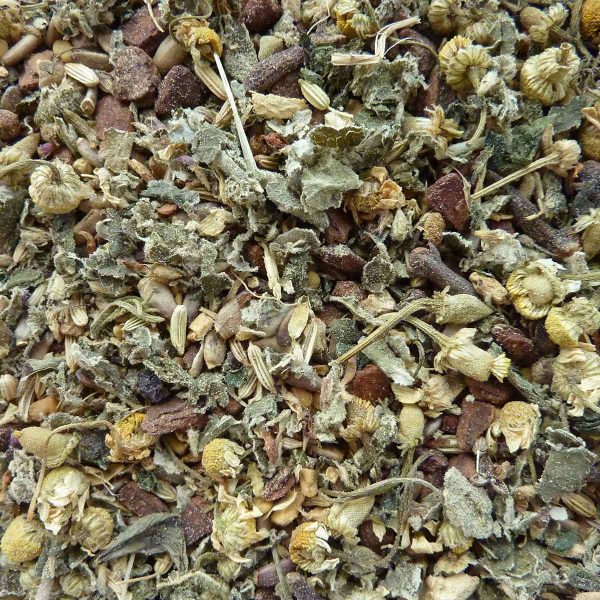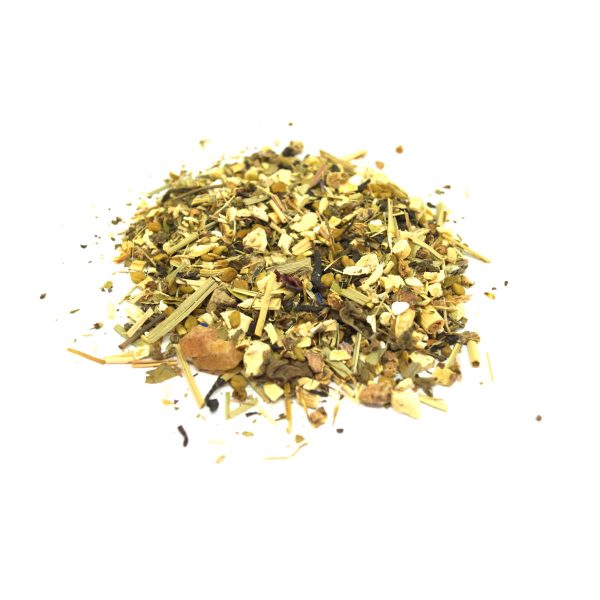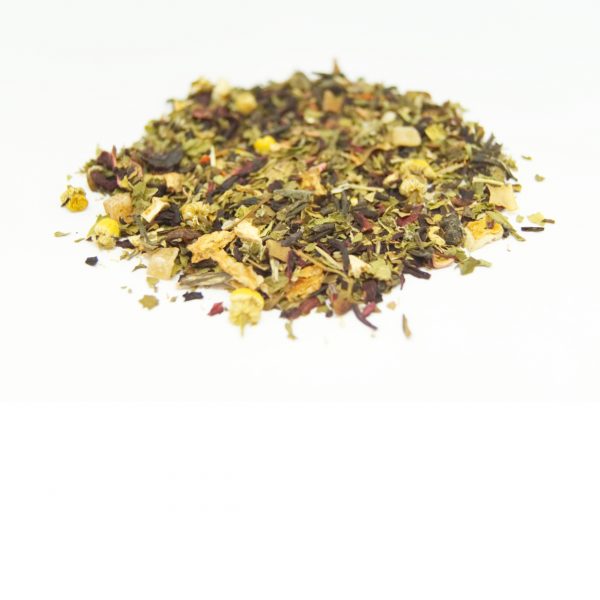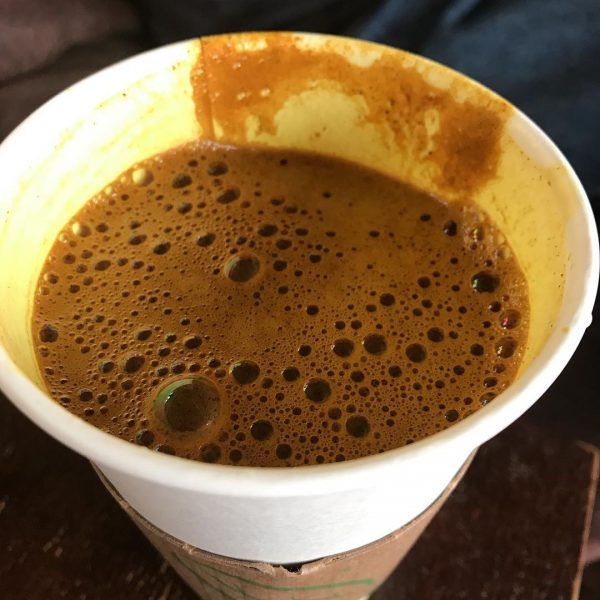With over 400 different kinds of loose tea that will exceed all tea lover’s expectations. You’re sure to find something you will love! All handcrafted by us in North Dakota.
Description
Blender’s Notes Liver Balance ~ Fatty Liver:
Steep Me Self-Help Tea combinations are a fantastic way to get health benefits outside of the standard tea leaf. Liver Balance ~ Fatty Liver blend will help the body shed the extra enzymes that the liver has produced due to damage or disease from fatty liver disease, hepatitis, drug and alcohol, metabolic syndrome, cirrhosis, and heavy metal concerns. Elevated liver enzymes are often a sign of inflamed or damaged cells in the liver. Inflamed or injured liver cells leak higher levels of certain chemicals into the bloodstream. These chemicals include liver enzymes that may appear higher than usual on blood tests. The most common elevated liver enzymes are Alanine transaminase (ALT). Aspartate transaminase (AST). Alkaline phosphatase (ALP). Gamma-glutamyl transpeptidase (GGT). Elevated liver enzymes might be found during routine blood testing. In most cases, liver enzymes are only mildly raised for a brief time. This usually does not signal a chronic, serious liver problem. Aspartate aminotransferase (AST) and alanine aminotransferase (ALT) are two of the liver enzymes healthcare providers look at when trying to figure out if you have a problem with your liver. Blood tests that find high ALT levels or high AST levels may be a sign of a liver problem. When compared to each other, ALT and AST levels can help identify toxins in the liver, liver disease, or liver damage. This article will discuss ALT and AST liver enzymes and what they do inside your body. It will also cover what happens during testing and what test results can reveal. Aminotransferases are chemicals the liver uses to make glycogen. Glycogen is the stored form of glucose, the sugar that the body uses for energy. Any glucose not immediately used will be changed into glycogen. It is then stored in cells for future use. Most will be stored in the liver. Aspartate aminotransferase (AST) is found in a variety of tissues, including the liver, brain, pancreas, heart, kidneys, lungs, and skeletal muscles. If any of these tissues are damaged, AST will be released into the bloodstream. While high AST levels mean there may be tissue injury, it does not always relate to the liver. By contrast, alanine aminotransferase (ALT) is found in the liver. High ALT levels are always worrying, but they do not necessarily point to something serious. If your ALT level is high, it may indicate minor or severe liver injury. ALT and AST Liver Enzymes: What Lab Values Mean (verywellhealth.com)
In fatty liver disease (hepatic steatosis), fat builds up in your liver and can eventually cause problems with liver function. Over time, the disease can progress to life-threatening conditions such as cirrhosis and liver cancer. Fatty liver disease comes in two forms. They are metabolic dysfunction-associated steatotic liver disease (MASLD, formerly known as nonalcoholic fatty liver disease or NAFLD) and alcoholic fatty liver disease (AFLD), also called alcoholic steatohepatitis. These two types have different causes but equivalent results. As liver damage increases, you may develop complications of cirrhosis. These occur when your liver can no longer remove toxins from your blood. Complications are:
Hepatic Encephalopathy: Inflammation of the brain that leads to confusion, trouble thinking, and memory loss.
Ascites: Bloating due to fluid build-up in the abdomen
Liver cancer: Masses or tumors in the liver or biliary tract
Portal hypertension: Increased pressure in the portal vein, which carries blood from the digestive system to the liver.
Internal bleeding: Portal hypertension leads to ruptured veins.
Hepatopulmonary syndrome: A rare condition of improper liver function that leads to dilated (widened) blood vessels in the lungs, which impair lung function.
Hepatorenal syndrome: Poor blood flow to the kidneys, which impairs their function.
Some of these complications—such as cancer and hepatorenal syndrome—can be life-threatening.
Fatty Liver: Signs, Symptoms, and Complications (verywellhealth.com)
In this blend we started with Milk Thistle. Milk Thistle consists of a group of compounds extracted called silybin, silychristin, and silydianin. Milk thistle has been used to treat bile duct and liver conditions, and research shows that it may have liver-protective properties. Milk Thistle or silymarin may help protect against liver disease progression, prolong life in people with alcoholic cirrhosis, and enhance overall quality of life in people with liver disease. Next is Black Cumin. Black Cumin may help protect the liver against injury and damage to its antioxidant content and ability to reduce inflammation and oxidative stress. We also added Dandelion Root because it is loaded with antioxidants (especially polyphenols and beta-carotene) that help neutralize or prevent the negative effects of free radicals in our bodies. The roots contain compounds that cause an increase in bile production thereby helping improve digestion. In addition to this, the increase in bile production also assists the liver in digesting foods and removing toxins quickly as well as efficiently cleaning the liver and the water-soluble polysaccharides from the dandelion root may help protect the liver from hepatic injury. Turmeric because the main active component curcumin has powerful anti-inflammatory, antioxidant, and anticancer properties, which makes this herb a popular choice for those with liver disease. A solid curcumin treatment significantly improves NAFLD severity. Peppercorns because they contain Piperine which is a compound found in black pepper that enhances curcumin absorption. Ginger Root was added because it contains powerful compounds, including gingerols and shogaols, that help inhibit inflammation and protect against cellular damage, which may help support liver health. Plus, ginger may help protect your liver against toxins like alcohol. It has shown significant reductions in ALT, GGT, inflammatory markers, and fat accumulation in the liver.
We also include Chamomile. The oils exhibit potent antioxidant activity that may make it quite effective in protecting the body against oxidative stress. Burdock Root was included because the chemicals that give burdock its bitter taste, also stimulate bile production and digestive juices in the gut, which helps the liver to rapidly process toxins and flush them from the system. Clearing toxins from the blood is one of the main purposes of the liver, and burdock’s organic compounds and components have been linked to improving this function. Licorice Root has been shown to have anti-inflammatory, antiviral, and liver-protective effects. The active component in licorice root is the saponin compound glycyrrhizin, which is commonly used in traditional Chinese and Japanese medicine to treat many ailments, including liver disease and significantly reduced ALT and AST. Peppermint has also been added because it is effective in the treatment of irritable bowel syndrome because of the herb’s antispasmodic properties, which help eliminate cramps, bloating, and gas. Peppermint on liver health have found that the herb displays potent antioxidant properties that may protect against liver injury, and this can help prevent lipid peroxidation—a process in which lipids interact with free radicals and degrade, causing damage to cells—and thereby potentially halt the development of liver fibrosis. Gynostemma because it can aid in the detoxification processes and protecting against conditions such as nonalcoholic fatty liver disease and it can help reduce liver inflammation and improve liver enzyme levels. Finally, we included Helichrysum. Helichrysum has been used for liver detoxification and stimulation for centuries. The antioxidant properties of helichrysum are responsible for its liver-protective, detoxifying, and choleretic effects. Helichrysum is commonly used as a liver disease treatment, and it helps cleanse the body of heavy metals and other toxins.
NOTE: “This/these claim(s) has/have not been evaluated by the Food and Drug Administration. This product is not intended to diagnose, treat, cure or prevent any disease.”
Features High Liver Balance ~ Fatty Liver:
- Leaves can be infused all day! (They will not get bitter)
- Lots of individual flavor based on the ingredients.
- All Wildcrafted Herbs
- All Organic where Wildcrafted is not available.
- Light Yellow Colour Cup of Tea
- Full of natural antioxidants and Low in Tannins and Very Hydrating
- Sample Size ~ 1 oz will make 8-10 ~ 16 oz teas.
- Sealed Bag ~ 4 oz will make 32-40 ~ 16 oz teas.
- Iced Tea ~ Always Double the amount of Tea for the same size cup!
- Per Serving ~ 1 tsp per 6 oz of H2O
- Recommend 3 tsp Per Day – resteep leaves 2-3 times.
- Caffeine: None
Ingredients: Steep Me Proprietary Organic and Wildcrafted Blend of Milk Thistle Seed, Black Cumin Seed, Dandelion Root, Turmeric Root, Peppercorns, Ginger Root, Egyptian Chamomile Flowers, Licorice Root, Peppermint Leaf, Gynostemma Leaf, and Helichrysum Flowers
Alternatively, try our Dirty Detox Phyto ~ Nutrition Tea OR Tea-Tox Phyto~Nutrition Tea OR Liver Support Micro~Nutrition Capsules
NOTE: “This/these claim(s) has/have not been evaluated by the Food and Drug Administration. This product is not intended to diagnose, treat, cure or prevent any disease.”
Not Safe for Pregnancy
Not Safe for Breastfeeding
NOTE: This/these claim(s) have/have not been evaluated by the Food and Drug Administration. The products offered by Steep Me Tea Apothecary -Franchisees – Wholesalers – Influencers or SteepMe.com are not intended to treat, cure, or prevent any illness or disease. If you have or suspect that you have a medical problem, consult with your physician for diagnosis or treatment. All gender specific blends are based on Gender Assigned at Birth. Use herbs as per instructions and always watch for any allergic reactions. You should always carefully read all product packaging and labels. Always consult your physician or health care provider before using any herbal products, especially if you have a medical problem. Steep Me Tea Apothecary and SteepMe.com and/or its proprietors assume no liability for any injury, illness or adverse effects caused by the misuse and/or use of the information or products presented
NOTE: When using Teas, Capsules, Tinctures and Micro-Nutrition to help with your ailment ~ please remember this is a marathon ~ we recommend an investment of time of at least 6 months to see positive change. Any gender specific blends are based on gender assigned at birth.
Additional information
| Weight | 4 oz |
|---|---|
| Size | , , |
Benefits
When talking about the many types of tea, Tisane (Herbal Infusion) or Herbal Tea or Self-Help Tea is really not tea at all. It is made like a tea and all the same items are used to make it, but it does not contain the Camellia Sinensis Plant (unless stated), but is simply roots, flowers, leaves, and fruits put together is a combination that is made just like a tea. With that being said…the health benefits of a Tisane or Herbal teas are different. They can vary depending on the ingredients and combination of herbs so there are no blanket health benefits – just depends on the ingredients. For many, the best part of Tisane or Herbal Tea or Self-Help Tea is the fact that it is caffeine free naturally. Of course there are herbs that can be added to change that. The most popular Herbal teas include Chamomile, Peppermint, Spearmint, and any combination of fruit blends or infusions. Our Self-Help Teas are simply supplemental herbal combinations to aid with an occasional ailment specific to what may be happening in your life. The teas are built to work and are not build with any specific flavorings. The blends are tested to the minimum requirements laid out by Steep Me A Cup of Tea. The taste provided is natural to the herbs present in the blend. No flavorings added. This/these claim(s) has/have not been evaluated by the Food and Drug Administration. The products offered by Steep Me Tea Apothecary -Franchisees – Wholesalers – Influencers or SteepMe.com are not intended to treat, cure, or prevent any illness or disease. If you have or suspect that you have a medical problem, consult with your physician for diagnosis or treatment. Use herbs as per instructions and always watch for any allergic reactions. You should always carefully read all product packaging and labels. Always consult your physician or health care provider before using any herbal products, especially if you have a medical problem. Steep Me Tea Apothecary and SteepMe.com and/or its proprietors assume no liability for any injury, illness or adverse effects caused by the misuse and/or use of the information or products presented.
Tisane or Herbal Tea or Self-Help Tea
Related products
DeStressor
From: $19.00
This is a great blend of herbs to help reduce the stress that is happening in your life. Meant to calm the mind and has a natural antidepressant. This combination of herbs can help solve the symptoms associated with high stress and agitation.
Select options
This product has multiple variants. The options may be chosen on the product page
Insomnia Tea
From: $16.00
Select options
This product has multiple variants. The options may be chosen on the product page
Kick Ur Kold Cold and Flu Relief
From: $15.00
Looking to get rid of the CRUD.....the Kick Ur Kold is the best way to get rid of it! Safe for little ones....safe for pregnancy....safe for breastfeeding!
Select options
This product has multiple variants. The options may be chosen on the product page
Kidney ~ Bladder
From: $15.00
Select options
This product has multiple variants. The options may be chosen on the product page
Milk In It ~ Breastfeeding Tea
From: $12.00
A fantastic herbal blend with chai spices and the addition of fennel and fenugreek to help enhance milk production. We have seen huge success rates with this blend.
Select options
This product has multiple variants. The options may be chosen on the product page
Red Blood Cell
From: $15.00
Wonderful combination of herbs and teas to help you increase your red blood cell count. Plus, a great tea to help exercise recovery! Feel better!
Select options
This product has multiple variants. The options may be chosen on the product page
TranquiliTEA ~ Post Partum Calming & Relaxing
From: $12.00
This blend is a fantastic 4th trimester tea - for after baby is born. This tea is a great add in for breastfeeding because we added special herbs that help with Colic and calm the baby for feeding.
Select options
This product has multiple variants. The options may be chosen on the product page
VytaliTEE ~ Inflammation & Golden Milk
From: $15.00
A great stir in for inflammation, clarity, pain, energy, arthritis, memory, swelling, nausea and digestion.
Select options
This product has multiple variants. The options may be chosen on the product page

